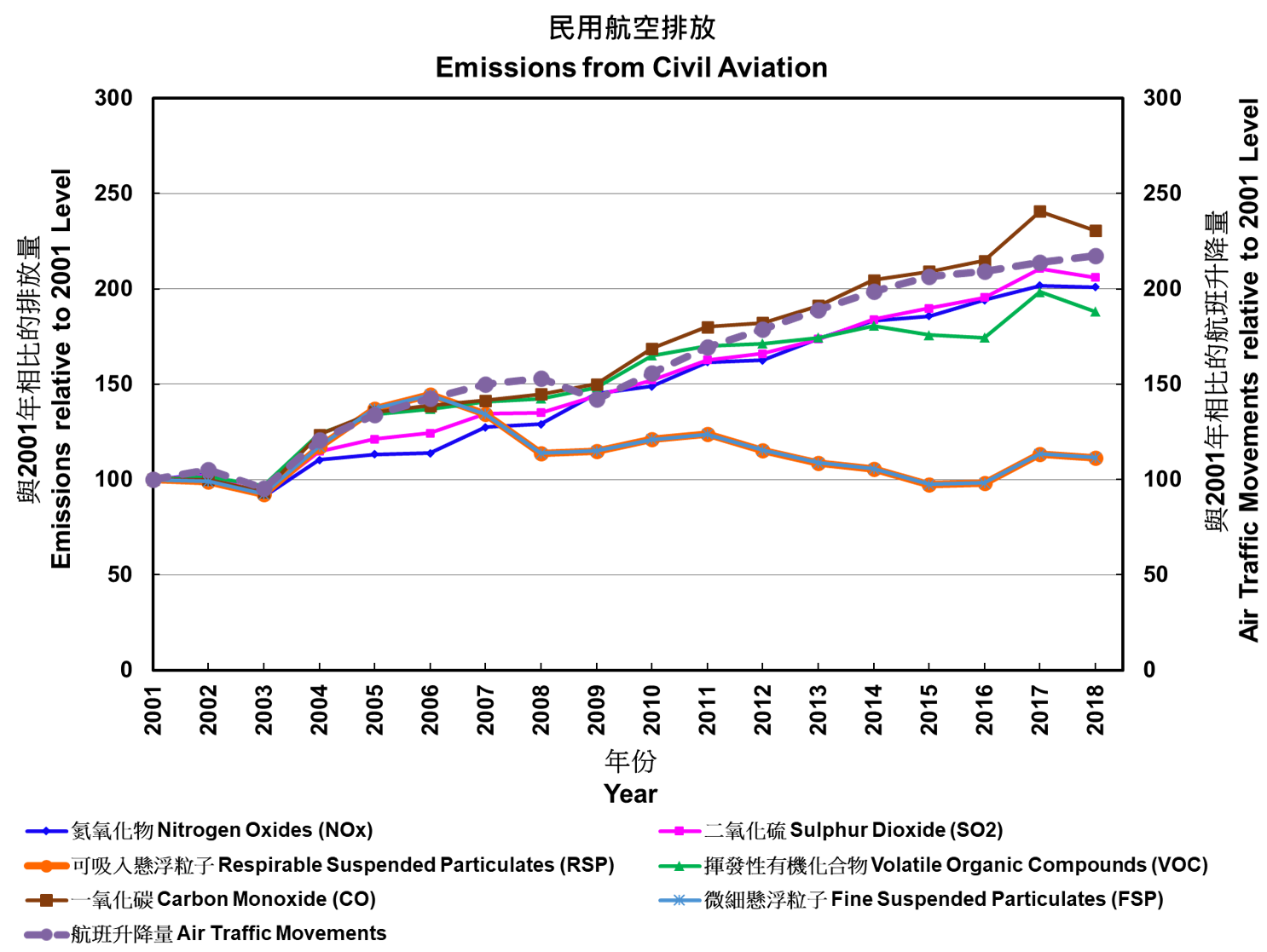Sectoral Analysis for Civil Aviation

Emissions from civil aviation accounted for less than 8% of the total local emissions of air pollutants in 2018. From 2001 to 2018, the air traffic movements increased by 117%, leading to an increase of NOx emissions by 101%.
Since December 2014, the Airport Authority Hong Kong banned the use of onboard fuel combustion auxiliary power generation units in aircraft at frontal stands in the Hong Kong International Airport (HKIA). Such measures reduced the emissions from burning jet fuel.
The Civil Aviation Department (CAD) has adopted the standards set out at Annex 16 to the Convention on International Civil Aviation, Volume II, Part III, Chapter 2 to certify the engines installed on aircraft using the HKIA in order to reduce their emissions. This document specifies the standards for four types of emissions that an aircraft engine has to meet, including NOx and CO. Taking advantage of the latest development in satellite navigation technologies, CAD has conducted enhancements of the air route system which enabled shortened travelling distances and more aircraft to fly at optimum and fuel-efficient altitudes, thereby achieving fuel savings and a reduction of carbon dioxide emissions.